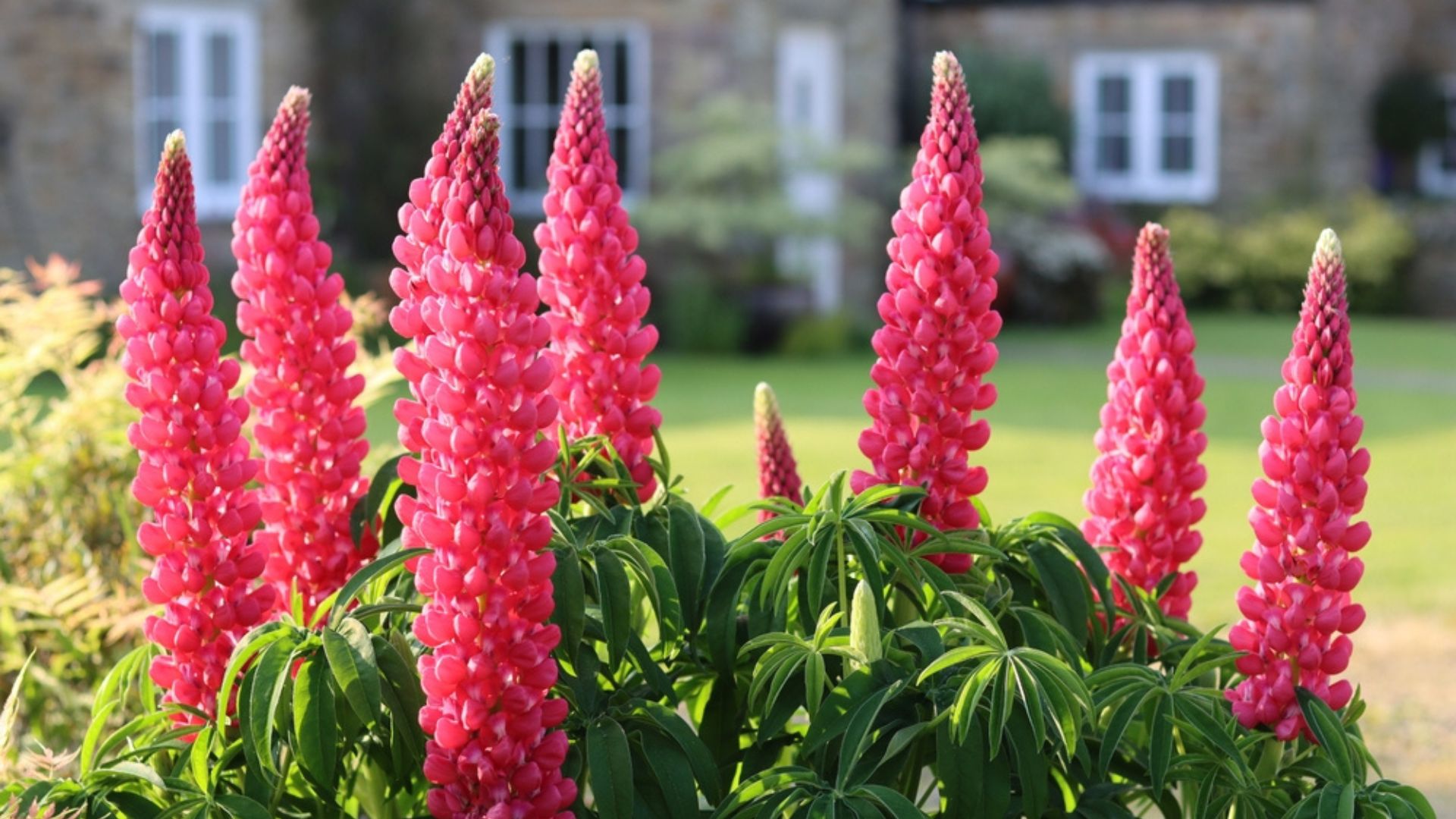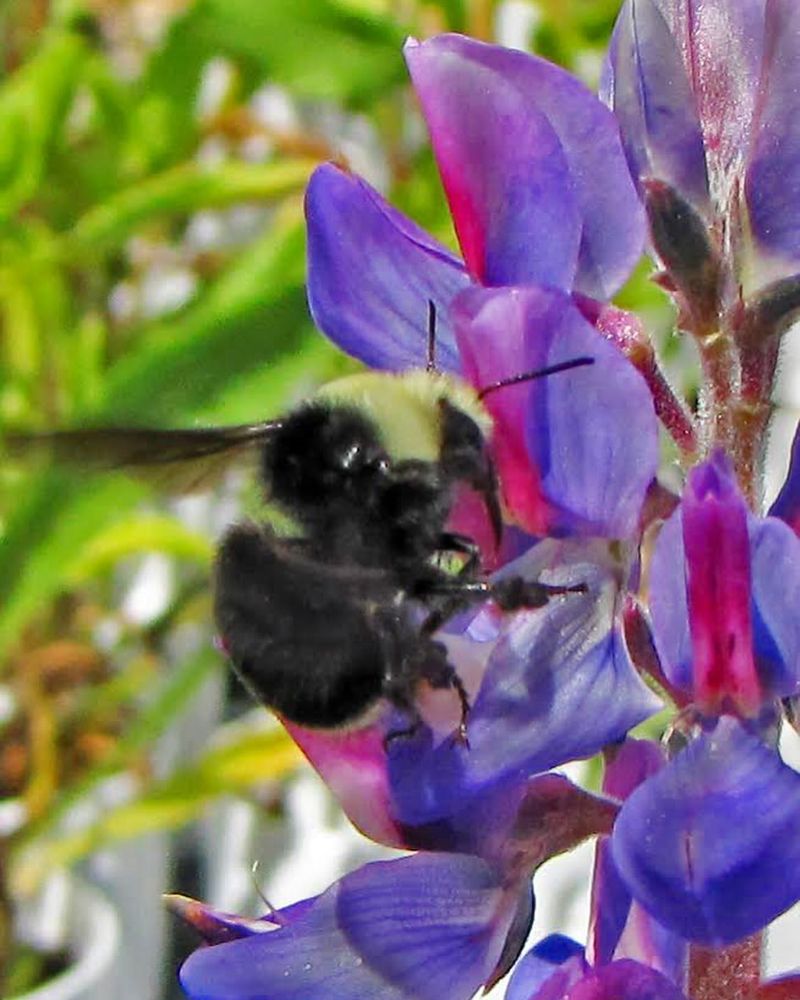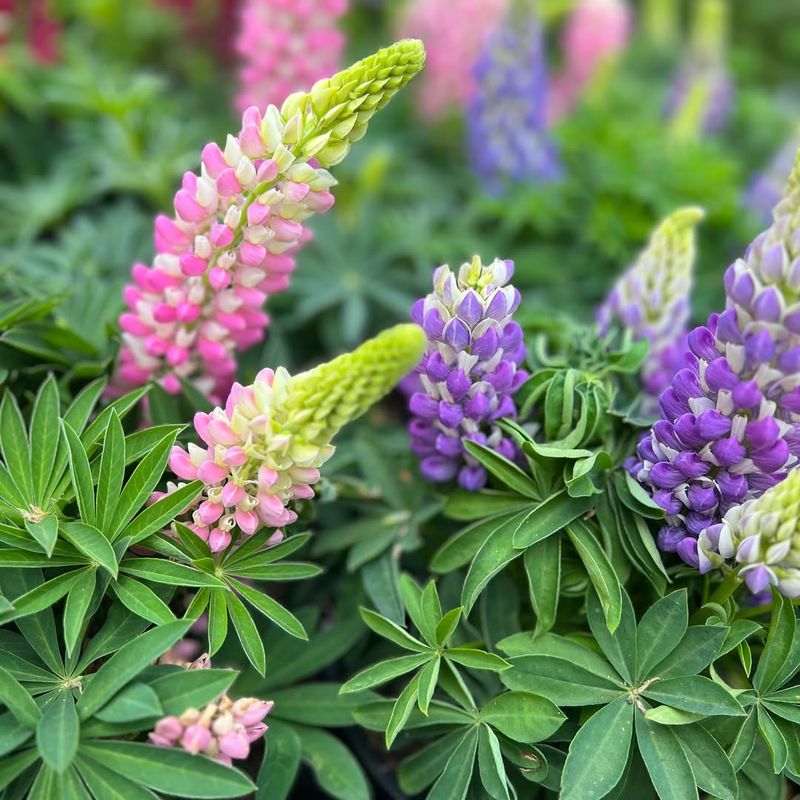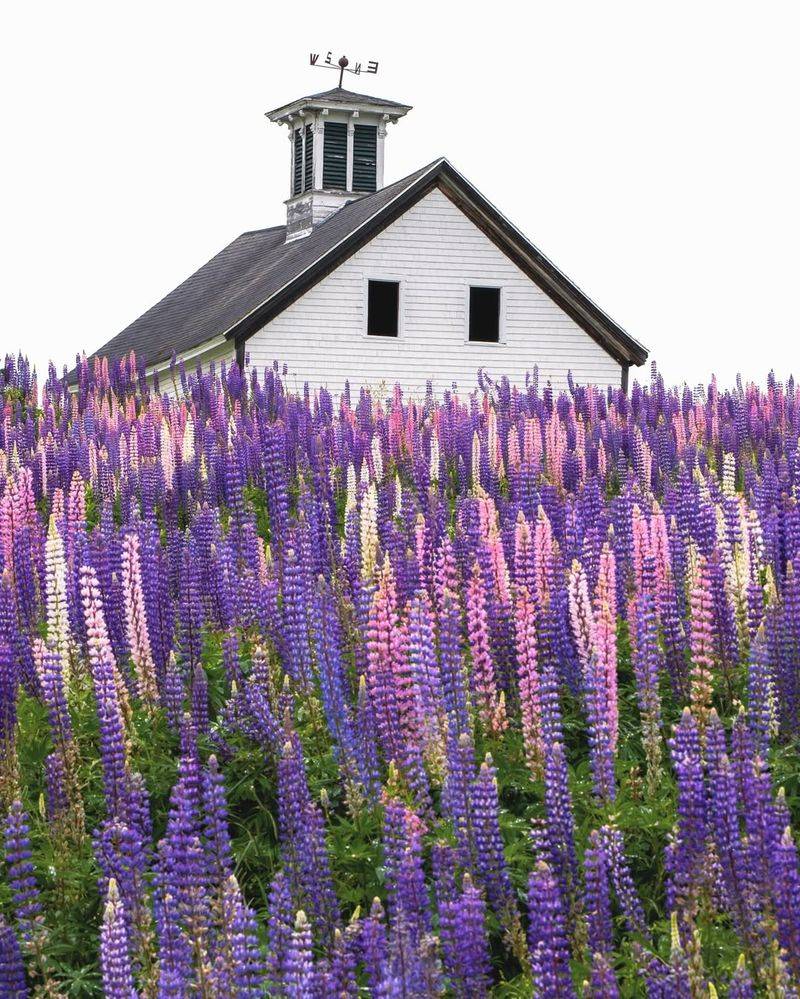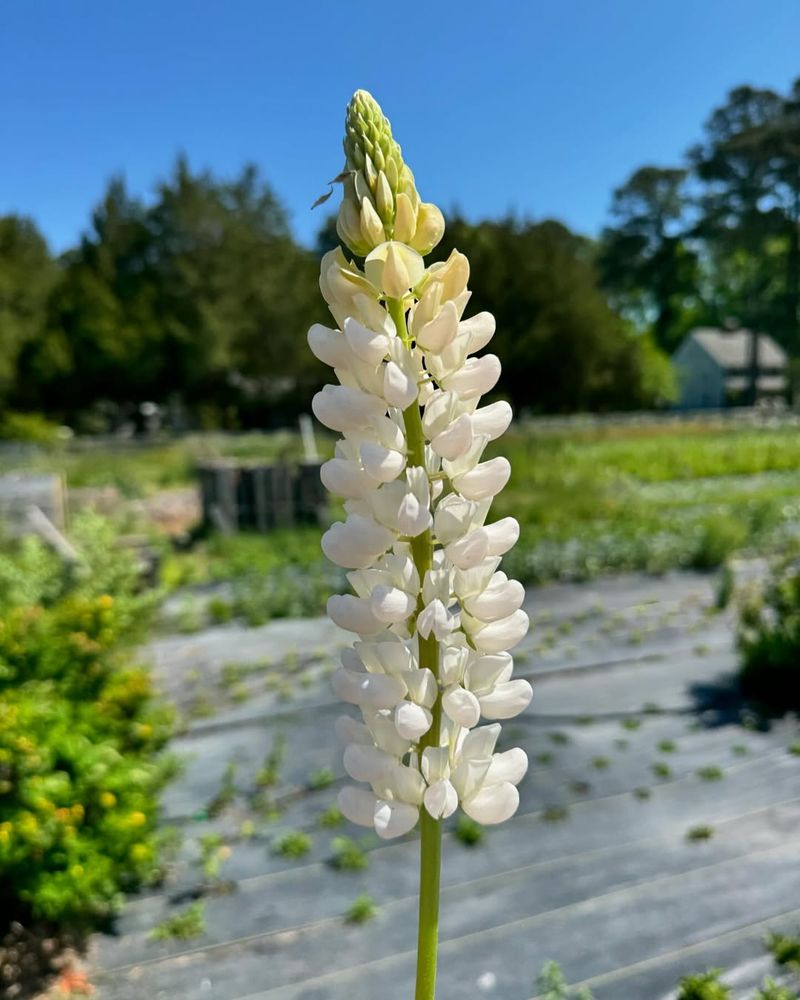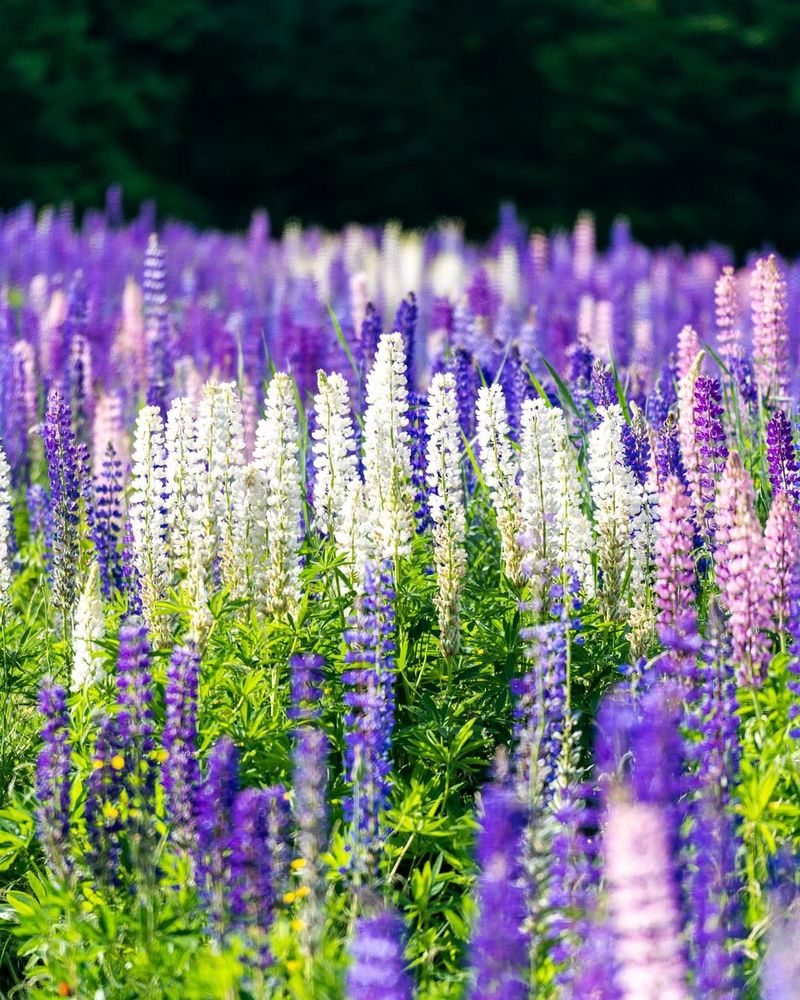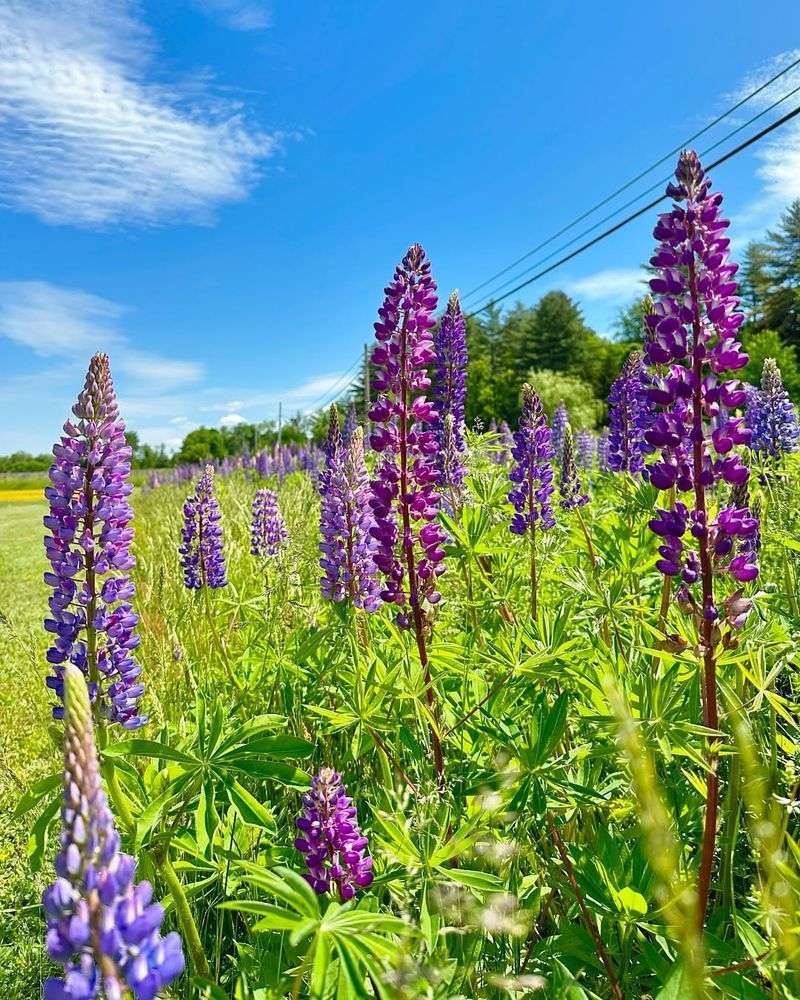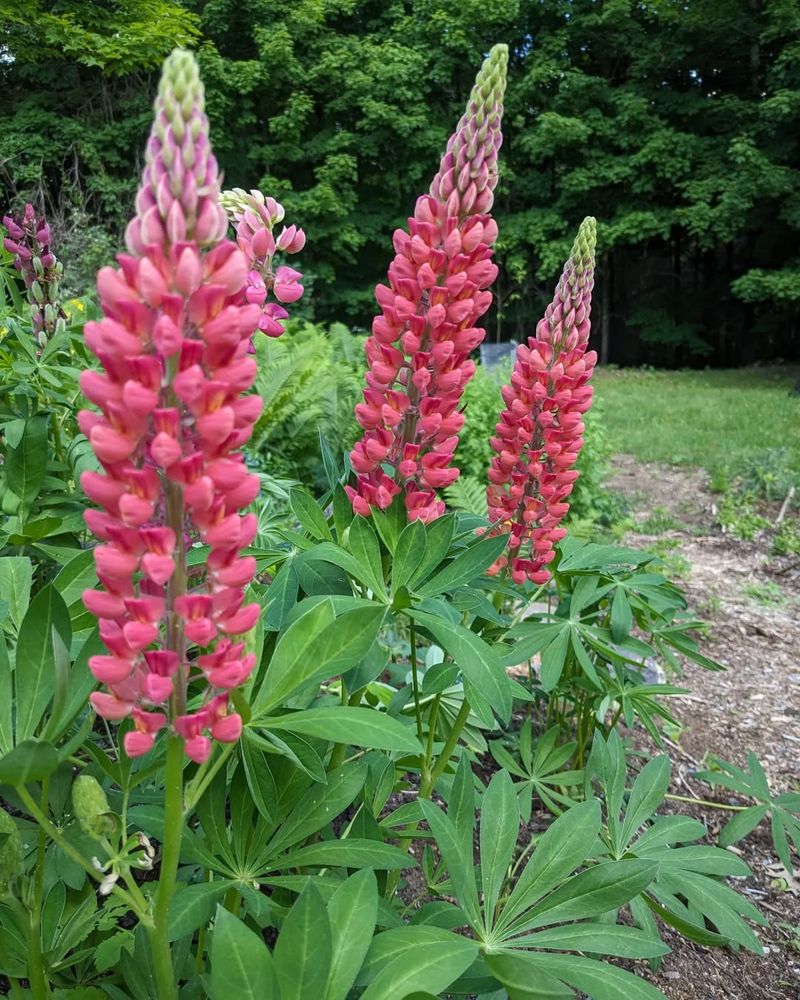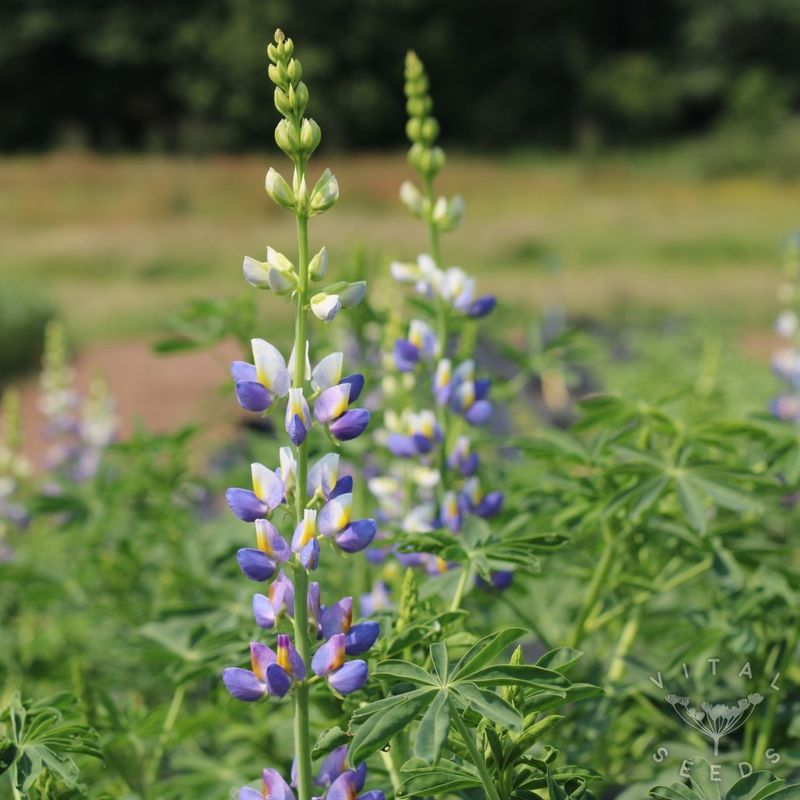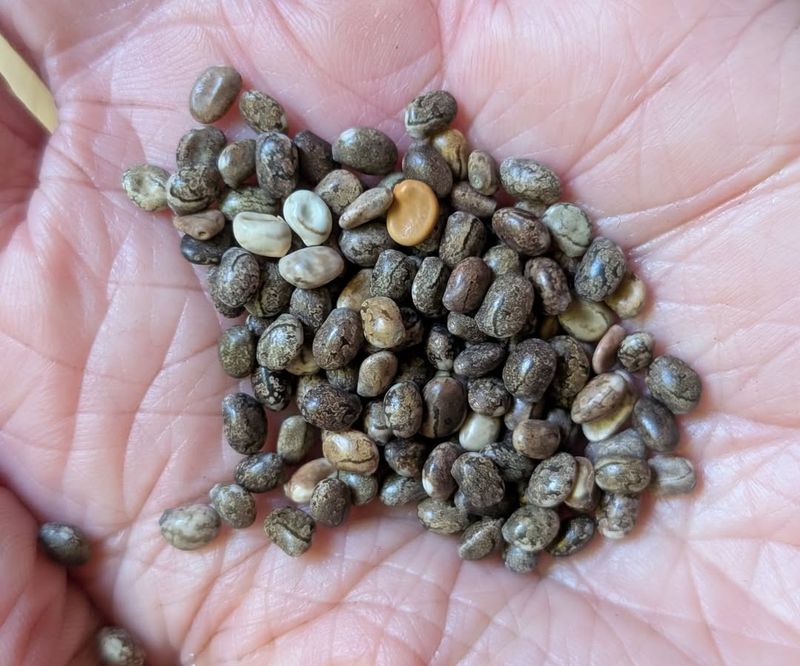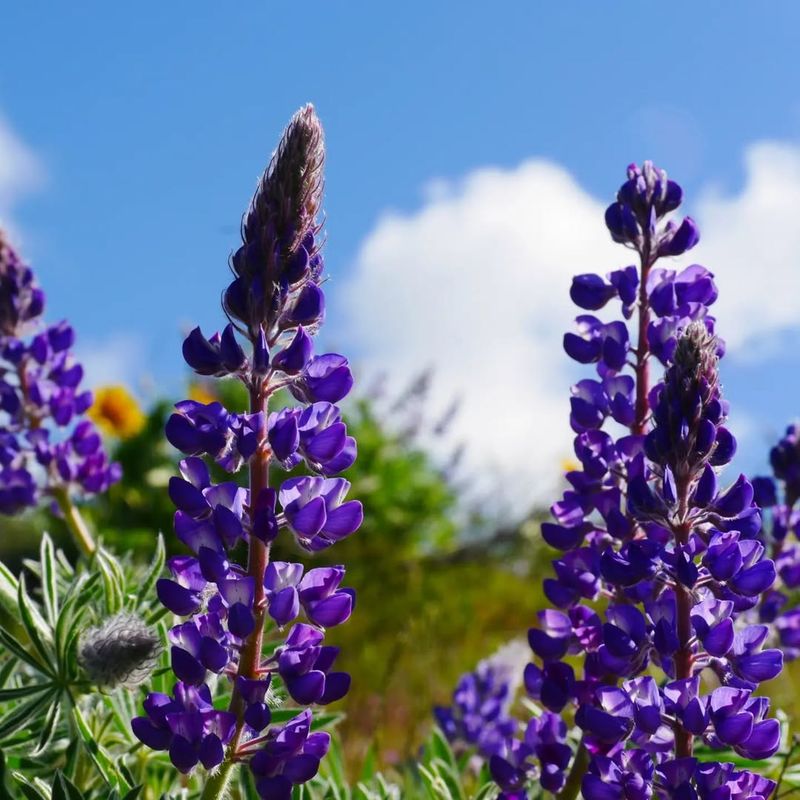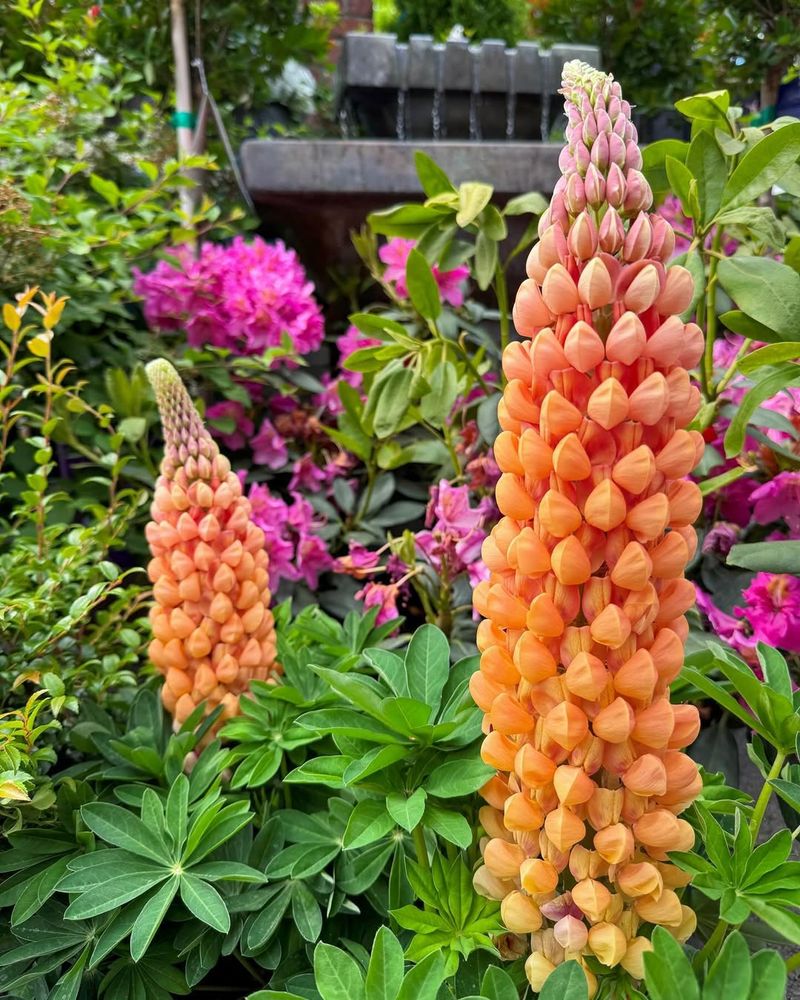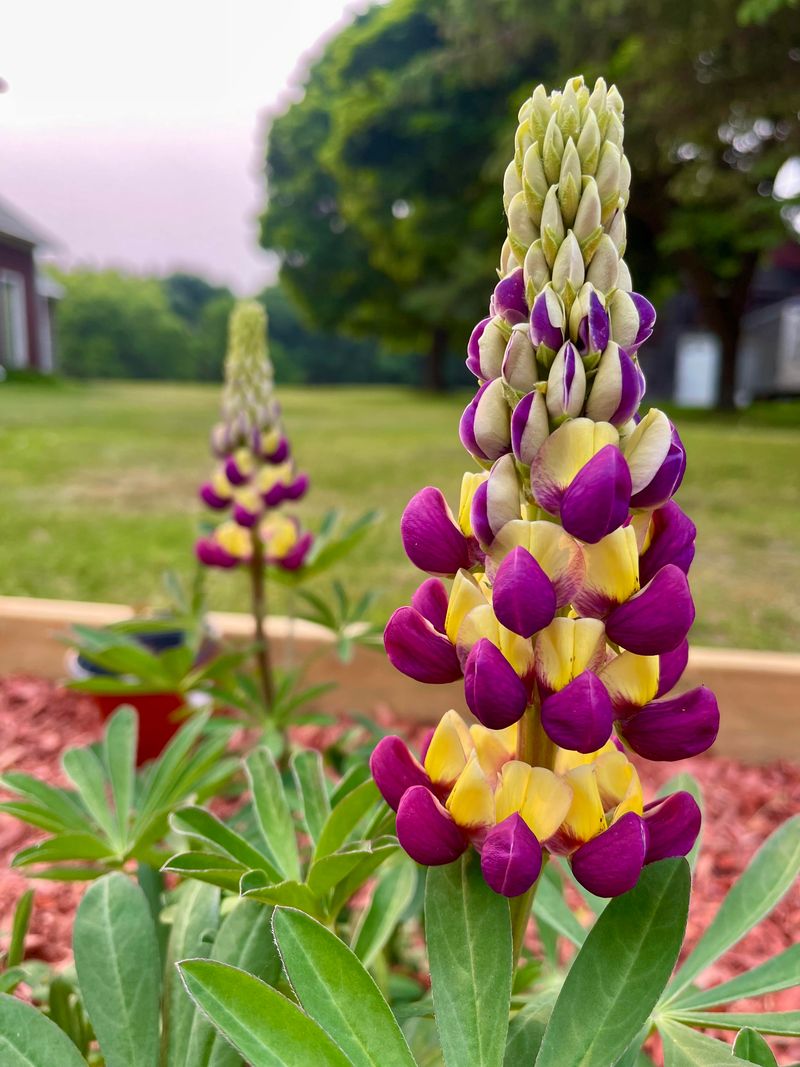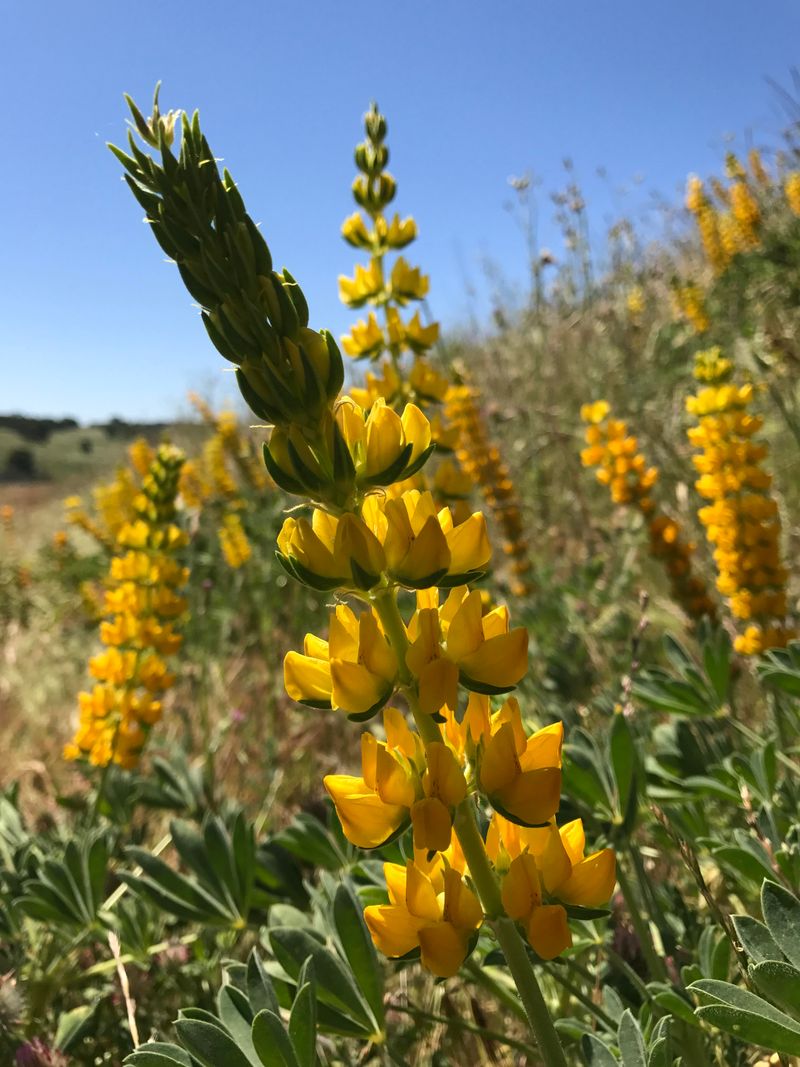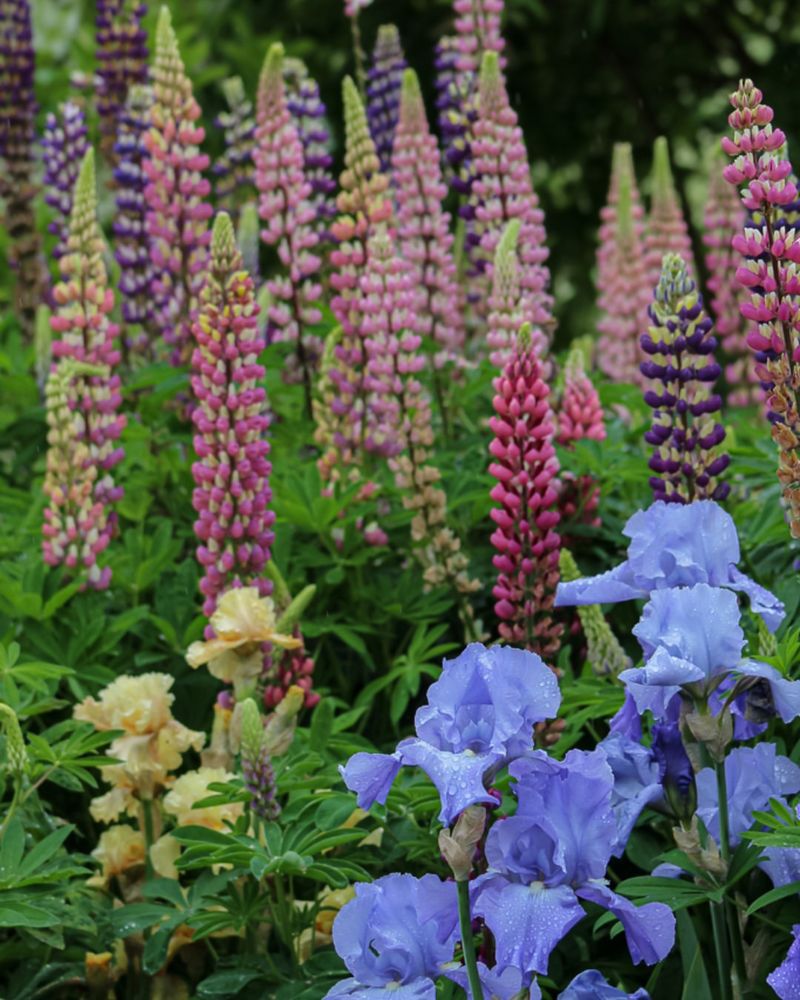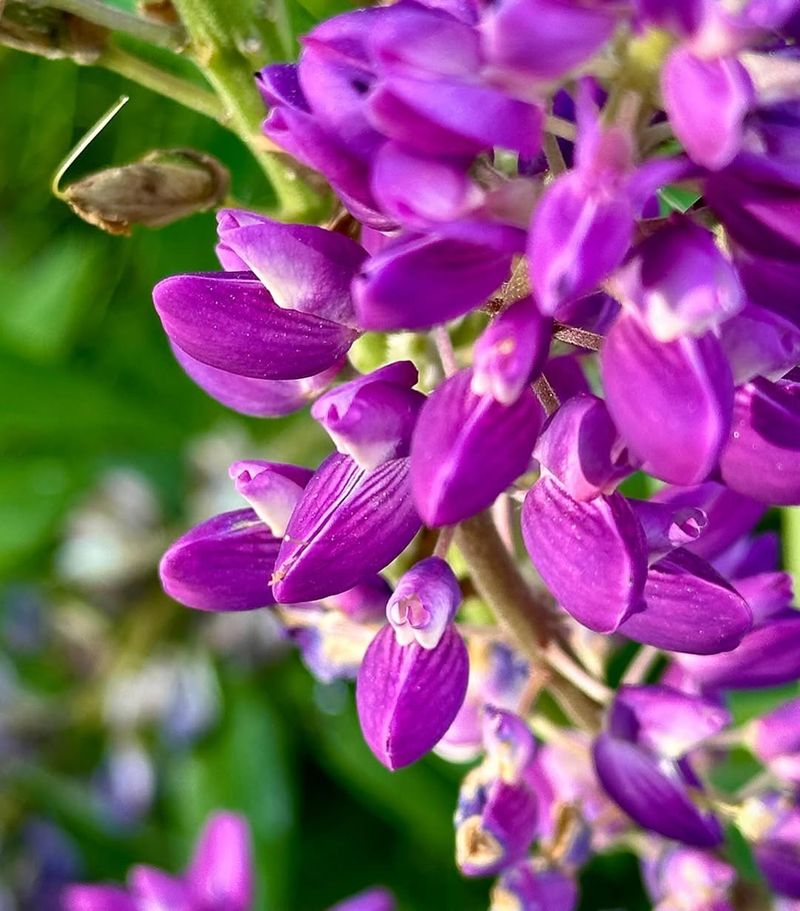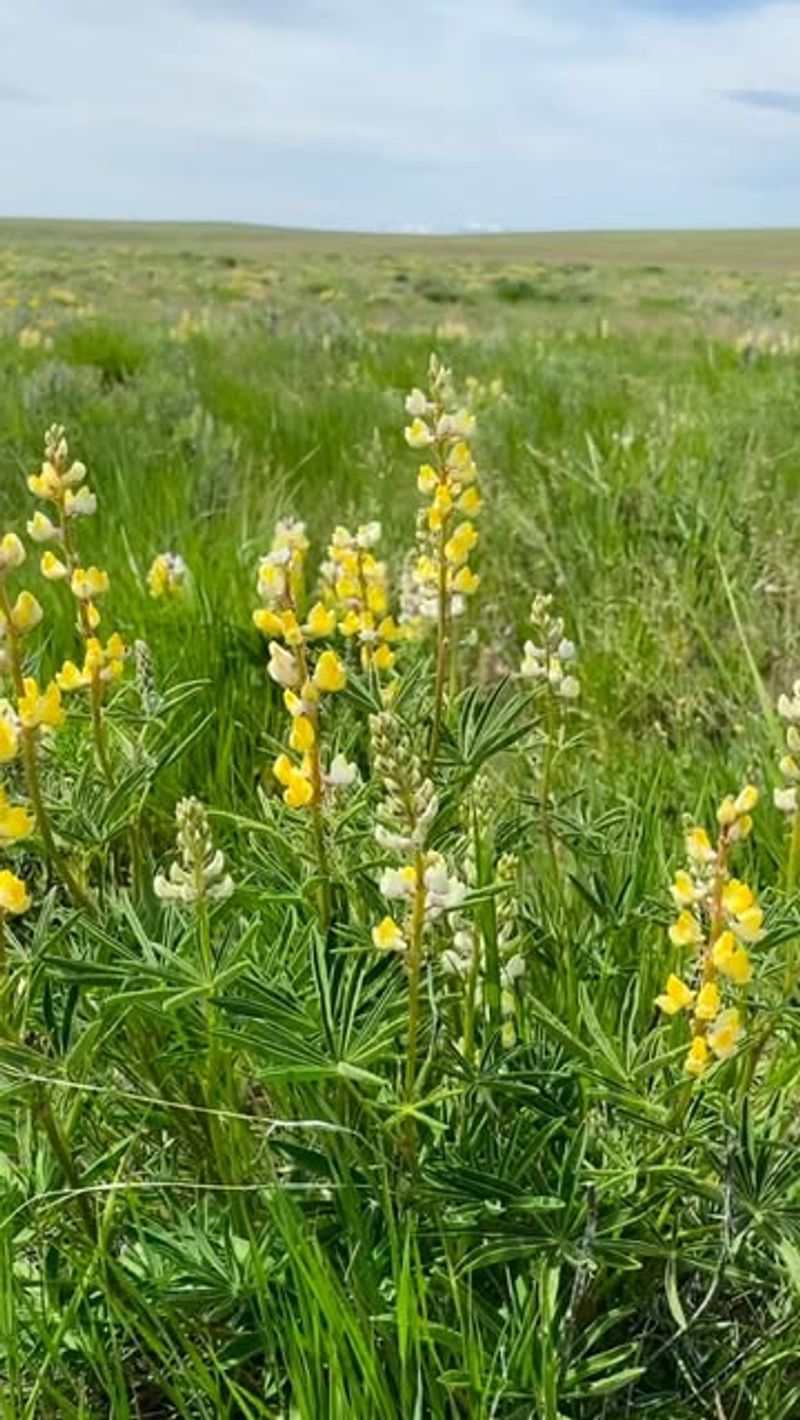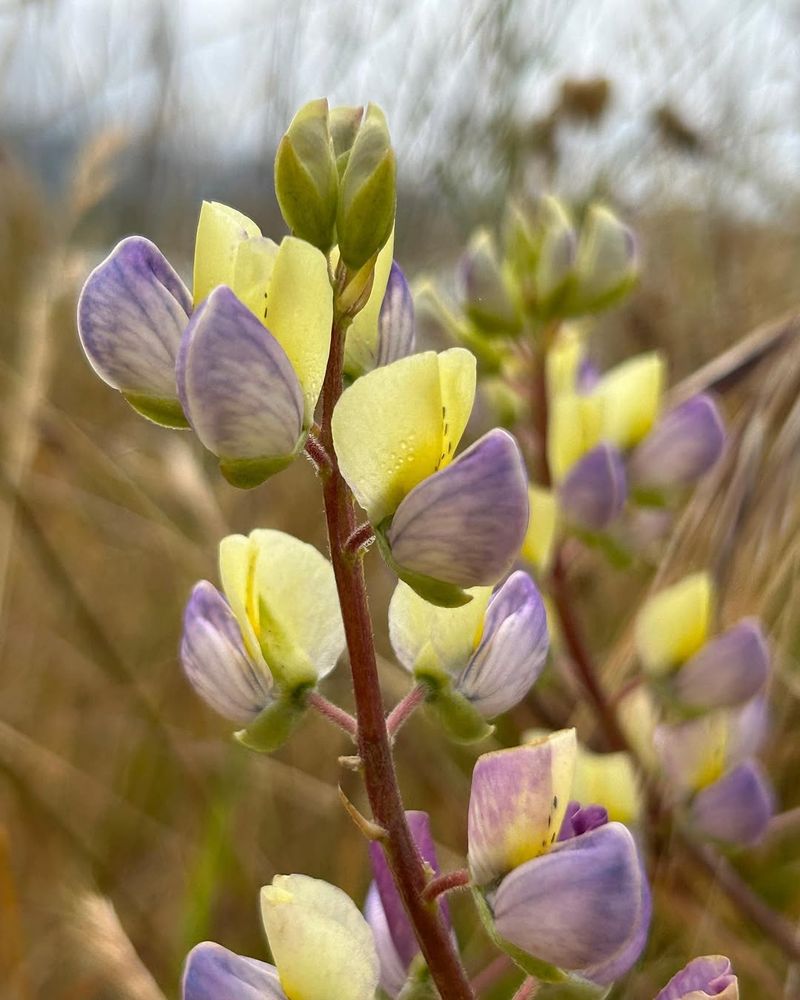Gardeners, it’s time to give lupines the love they deserve! These vibrant blooms aren’t just pretty—they’re surprisingly tough, versatile, and downright underrated.
Whether you’re a newbie or a seasoned plant pro, lupines bring serious perks to your garden. Some of their benefits might just surprise you! Here’s why these slept-on flowers deserve a prime spot in your green space.
1. Color Variety
The array of colors is truly remarkable. When you plant lupines, expect to see not just the typical purples but also pinks, whites, and blues. These flowers can brighten up any garden, offering a rainbow of hues to complement other plants.
They fit well in mixed borders or as stand-alone features, providing a visual feast. Their ability to blend seamlessly into different garden themes makes them indispensable. Whether your garden style is modern or traditional, these blooms add a touch of elegance that appeals to anyone who lays eyes on them.
2. Pollinator Attraction
The gentle buzz around your garden signals a delightful transformation. Lupines are natural magnets for pollinators like bees and butterflies.
Pollinators play a crucial role in plant reproduction, and having lupines ensures they have a reason to visit. Watching these creatures flit from flower to flower, you’ll witness a lively and vibrant garden life. It’s a simple way to contribute to ecological health while enjoying the serene beauty these flowers bring.
3. Nutrient Fixation
What’s happening beneath the soil might surprise you. Lupines have the incredible ability to fix nitrogen, enriching the soil naturally. This process enhances soil fertility, benefiting surrounding plants.
It’s an organic method to improve your garden’s health without synthetic fertilizers. With these flowers, you’re cultivating a sustainable environment. This strategy not only supports robust plant growth but also reduces the need for chemical interventions.
4. Low Maintenance
Your busy schedule doesn’t have to end your gardening dreams. Lupines are known for their low-maintenance nature. They thrive with minimal care, making them ideal for those with limited time. These resilient plants require basic watering and occasional pruning.
Their hardy nature means they can survive and bloom without constant attention. Perfect for both lazy gardeners and those who love simplicity. Incorporating these flowers into your garden allows you to enjoy beauty without a hefty time investment, making them a smart choice for many.
5. Versatile Growing Conditions
Adapting to various environments is a standout feature. Lupines can grow in full sun or partial shade, accommodating a range of growing conditions. This flexibility makes them suitable for diverse garden settings.
They are not fussy about soil types either, tolerating sandy, loamy, or even clay soils. Such adaptability means you can plant them almost anywhere in your garden. Whether you have a sunny plot or a shadier corner, these plants will find a way to thrive, giving you creative freedom in garden planning.
6. Long Blooming Season
Flowers that stick around for a while are a gardener’s dream. Lupines offer an extended blooming period, ensuring your garden remains colorful for months. Once they begin flowering, they can continue to add beauty and interest from late spring through summer.
This long-lasting display means more time to appreciate their stunning blossoms. Their enduring presence provides a consistent source of joy and charm, making your garden a delightful place to be throughout the growing season.
7. Wildlife Support
A thriving ecosystem includes a variety of creatures. Lupines contribute significantly by offering shelter and food for small wildlife, including birds and beneficial insects.
These interactions create a dynamic and lively garden atmosphere. By planting lupines, you encourage a balanced environment where different species coexist. This diversity enhances the beauty and functionality of your garden, fostering a habitat that supports wildlife.
8. Erosion Control
Gardens on slopes can be challenging. Lupines are effective in controlling soil erosion due to their strong root systems. They anchor the soil, preventing it from being washed away during heavy rains.
This makes them particularly useful in gardens with uneven terrain. Their roots not only stabilize the soil but also improve its structure over time. It’s a practical and aesthetic solution for maintaining garden integrity.
9. Historical Significance
Plants with a story often inspire. Lupines have been cultivated for centuries, valued for both their beauty and utility. Their historical presence in various cultures underscores their enduring appeal. They have been featured in art, literature, and traditional medicine, highlighting their multifaceted significance.
Understanding their past enriches your appreciation of their role in gardens today. It’s fascinating to learn about plants that have stood the test of time, maintaining their status as favorites among gardeners worldwide.
10. Medicinal Uses
Beyond beauty, these plants offer more. Historically, lupines have been used in traditional medicine for their potential health benefits. They contain compounds that were believed to aid in digestion and other ailments. While modern usage is less common, their medicinal history adds another layer of intrigue.
Cultivating them invites you to explore the multifaceted nature of plants in your garden. It’s about embracing a holistic approach to gardening, where beauty meets tradition and wellness, allowing you to connect with nature in a meaningful way.
11. Edible Seeds
Garden produce isn’t only about vegetables. Certain lupines produce seeds that are edible when properly prepared. These seeds add an unusual but nutritious element to your garden’s yield. Known in some cultures for their protein-rich content, they are a unique addition to culinary adventures.
Including edible lupines offers an unexpected twist to your gardening experience. It’s about creating a space that not only pleases the eye but also provides sustenance, offering a delightful blend of beauty and utility.
12. Native Range and Adaptation
Understanding origins can enhance appreciation. Lupines are native to diverse regions, each species adapted to local conditions. This wide range of adaptation speaks to their hardiness and versatility. They can thrive in environments from coastal areas to mountains.
Knowing their native habitats can guide how you plant them at home, ensuring you mimic conditions they naturally enjoy. This knowledge empowers you to create a garden that caters to their needs, enhancing your success in cultivating them.
13. Fragrance
The subtle pleasures of gardening include fragrance. Lupines offer a gentle scent that’s pleasing without overpowering the senses. Their aroma adds a layer of enjoyment to your garden, making it a pleasant place to linger. A fragrant garden engages the senses, creating a full experience beyond just visual beauty.
Lupines can be part of this sensory oasis, enhancing the overall ambiance of your garden. It’s a subtle addition, but one that can transform how you experience outdoor spaces.
14. Seed Production and Propagation
Continuity in gardening is vital. Lupines produce abundant seeds, making them easy to propagate. This cycle allows you to expand your garden or share with fellow gardeners. Collecting seeds is straightforward, and planting them can lead to a thriving new generation. It’s a cost-effective way to enjoy more of these beautiful flowers.
Propagation through seeds ensures you maintain a consistent floral presence, enhancing the sustainability of your gardening practices. Sharing seeds also fosters a sense of community, connecting you with other enthusiasts.
15. Structural Beauty
Tall and striking, these plants offer more than color. Lupines are known for their vertical flower spikes, adding architectural interest to gardens. Their structure creates a dynamic look, breaking up the monotony of flat landscapes.
It’s about using plants to enhance the physical design of your garden space. In addition to their vibrant colors, their form contributes to the overall aesthetic. Incorporating them allows you to play with height and texture, creating visual intrigue and depth.
16. Symbolism and Meaning
Every plant tells a story. Lupines carry symbolic meanings, often associated with imagination and happiness. This adds a personal dimension to growing them in your garden. For those who appreciate symbolism, cultivating them can be a meaningful gesture.
Their presence can serve as a reminder of creativity and joy. Engaging with plants on this level enriches the gardening experience, transforming it from mere cultivation to an expression of personal values and beliefs.
17. Climate Resilience
Weather can be unpredictable, but some plants endure. Lupines are resilient to various climatic conditions, from drought-prone areas to cooler, damp regions. This adaptability means they can thrive where other plants might struggle. Their resilience makes them a reliable choice for gardens facing changing weather patterns.
Choosing them for your garden ensures a robust and adaptable floral display, ready to withstand the challenges of a shifting climate. It’s about achieving beauty without compromise, regardless of environmental challenges.
18. Companion Planting Benefits
Gardens thrive on harmony. Lupines can positively impact surrounding plants through companion planting. Their nitrogen-fixing ability enhances soil quality, benefiting vegetables and flowers alike. By planting them among your crops, you’re fostering a supportive environment where plants can thrive together.
This method encourages a holistic approach, maximizing the productivity and health of your garden. Companion planting with lupines is not only practical but also enriches the visual tapestry of your garden, marrying beauty with functionality.
19. Cultural Appeal
Beauty transcends boundaries. Lupines hold cultural significance in various societies, celebrated for their beauty and resilience. They appear in folklore and garden traditions across the globe. Growing them connects you to a global community of gardeners who appreciate their charm.
This cultural dimension enriches your gardening experience, offering a glimpse into how others perceive and value these flowers. It’s about embracing a shared appreciation for nature’s splendor and the diverse ways it can be celebrated.
20. Ease of Access
Starting a garden shouldn’t be complicated. Lupines are widely available at garden centers, making them accessible to gardeners everywhere. Their seeds and seedlings are easy to find, ensuring that you can quickly incorporate them into your garden plans.
This accessibility means you don’t have to search far and wide to enjoy their benefits. It’s about simplifying the process of enhancing your garden, allowing you to focus more on cultivation and less on procurement.
21. Photogenic Quality
Capturing nature’s beauty is a pleasure. Lupines are photogenic, providing ample inspiration for photography enthusiasts. Their vibrant colors and unique structures make them excellent subjects for capturing stunning garden images. Whether you’re an amateur or professional, snapping photos of these flowers can be rewarding.
It’s an opportunity to combine gardening with photography, creating lasting memories through images. Their visual appeal ensures that every shot tells a story of grace and elegance, perfect for sharing with others.
22. Pest Resistance
Dealing with pests is a common challenge. Lupines exhibit natural resistance to many garden pests, reducing the need for chemical treatments. This resilience contributes to a healthier garden environment by minimizing pest-related damage. It’s about maintaining beauty with minimal intervention, allowing other plants to thrive alongside them.
Pest resistance makes them a practical choice, supporting a garden that’s both beautiful and low-maintenance. Incorporating these flowers means fewer worries and more time to enjoy your garden.
23. Unique Leaf Structure
Leaves can be as fascinating as flowers. Lupines feature distinct palmate leaves, adding textural interest to gardens. Their foliage provides a lush backdrop that complements their vibrant blooms. This unique leaf structure is not only aesthetically pleasing but also adds depth to your garden design.
It’s about appreciating the whole plant, not just its flowers, and using every aspect to enhance your outdoor space. The leaves’ shape and texture contribute to a well-rounded garden aesthetic, captivating in every season.
24. Yearly Reseeding Potential
Continuity is key in gardening. Lupines have the ability to self-seed, ensuring they return year after year.This natural reseeding means less effort in replanting, providing consistent beauty without the hassle.
It’s a way to cultivate a sustainable garden that manages itself over time. By allowing them to reseed naturally, you enjoy a perennial display with minimal input. This self-sufficiency is appealing, offering a garden that thrives on its own, year after year, bringing joy with little maintenance.

